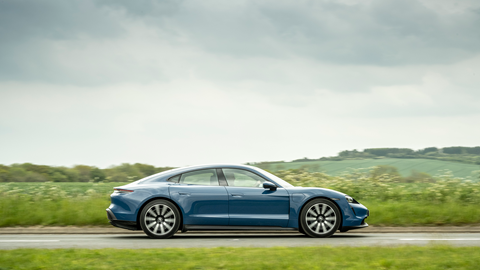► New approach to battery life estimates
► Will improve EV range and performance
► Developed by tech coalition group
If the condition of your electric vehicle (EV) battery is keeping you up at night, there’s a new approach in the works to improve accuracy when estimating how much life an EV battery has left. According to those behind the project, not only could the new approach keep EV drivers safer but may also help to maximise the range and performance of their car.
The project, glamorously known as VIPER – Validated & Integrated Platform for battery Remaining useful life – is being carried out by a coalition between the tech outfit Eatron Technologies and the Warwick Manufacturing Group (WMG) of the University of Warwick.
With funding from the Faraday Institution, the two groups have brought the full might of their respective areas of expertise to the table.
By combining WMG’s command of advanced electrochemical models with Eatron’s understanding of cloud battery management and integration, VIPER has produced remaining useful life (RUL) estimates with an accuracy rating of over 90%.
‘Unlocking the hidden capacity of a battery has the potential to increase an EV’s usable range and extend its lifetime,’ said Dr Umut Genc, CEO of Eatron.
‘There are benefits for the used EV market, too; as a result of these highly accurate RUL estimates, buyers could have confidence in the condition of a vehicle’s battery and be reassured about its ability to perform for many years to come.’
Why are accurate RUL estimates important?
Just as EV battery tech is progressing with new innovations like solid state battery packs, so too must the measures to keep us safe. If the natural degradation of a battery’s cells is not tracked closely, the battery can fail unexpectedly – an eventuality with potentially devastating consequences for both the car and the driver.

As explained by the project team, current RUL estimates rely on voltage-based data that can miss complex battery failures. Conversely, others may cautiously report failures in a functioning battery pack, condemning it to replacement despite being in relatively good health.
With accurate RUL estimates, however, it becomes possible to ‘extract the maximum performance and longevity from batteries, without compromising safety,’ according to Eatron.
What are Eatron Technologies and WMG?
The two groups involved in VIPER are tech specialists but have expertise in different areas. Eatron Technologies develops AI-integrated battery management software to improve the performance and reliability of EV batteries over the course of their lifetime.
WMG, is a department of the University of Warwick that collaborates in tech projects to drive innovation in UK manufacturing, while the Faraday Institution – the project’s primary benefactor – is a UK-based institute for electrochemical energy storage research.
‘Our support for UK-based efforts to develop cost-effective batteries that are efficient, fast charging, and can be safely and sustainably recycled is crucial to achieving the rapid growth in EVs on our roads that will see us deliver on our net-zero targets,’ said Professor Pam Thomas, CEO of the Faraday Institution.
‘The Eatron and WMG collaboration is a great example of the research and innovation elements of the Faraday Battery Challenge working together to deliver impact.’